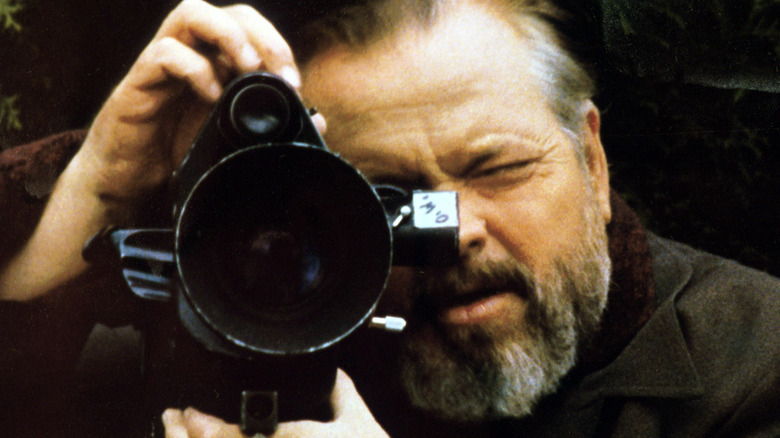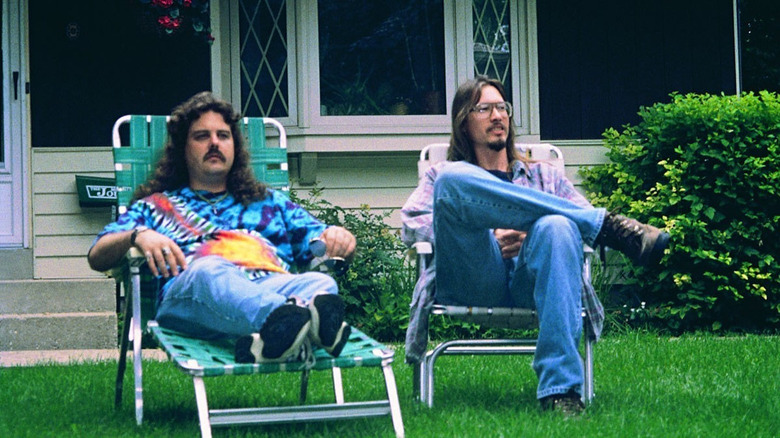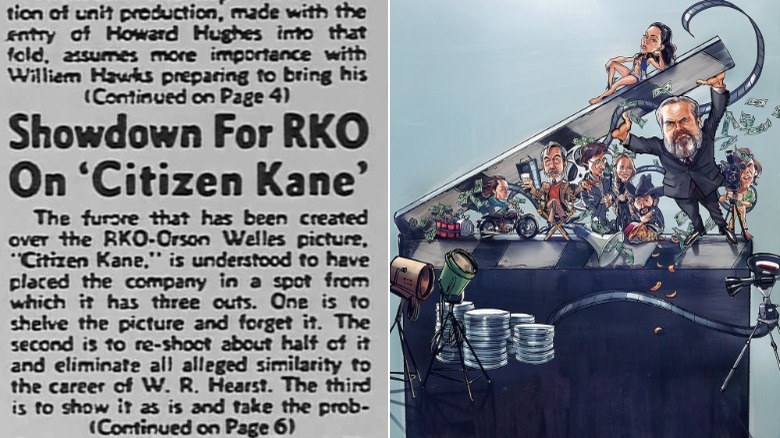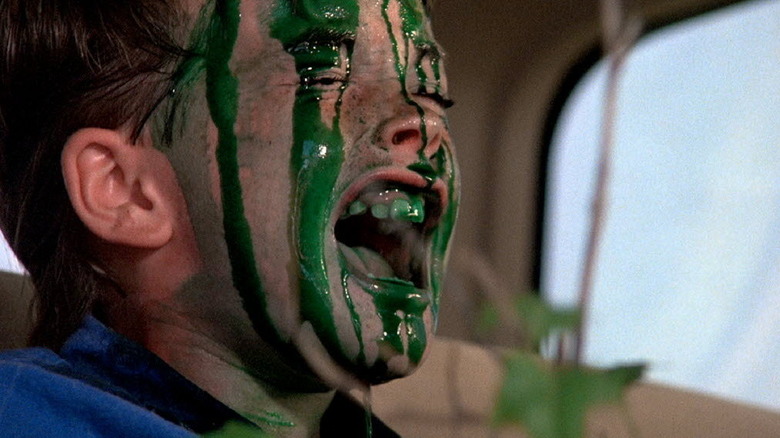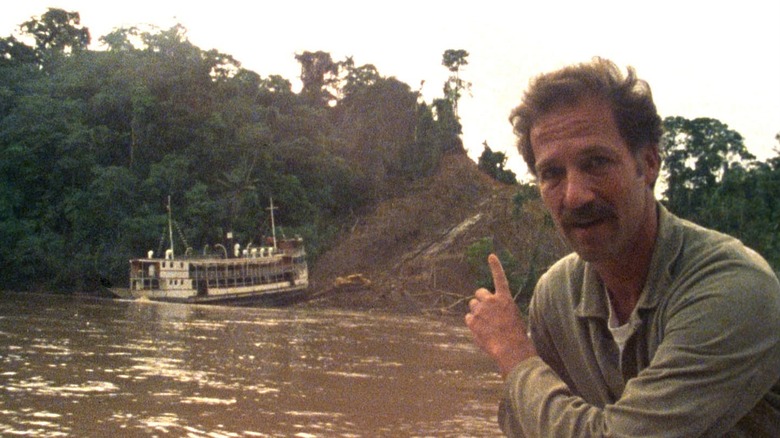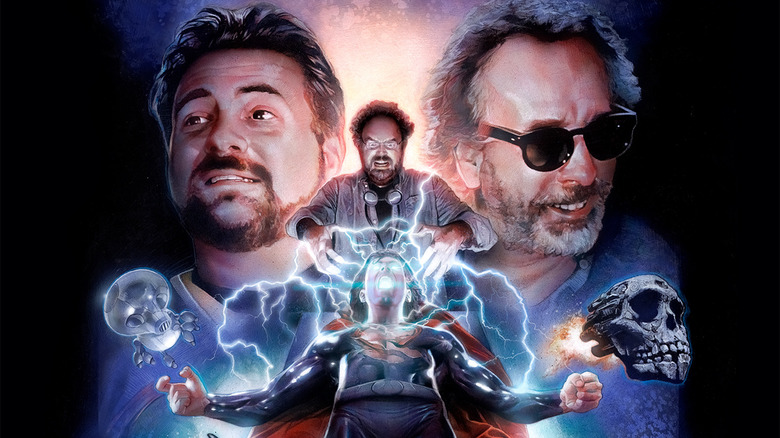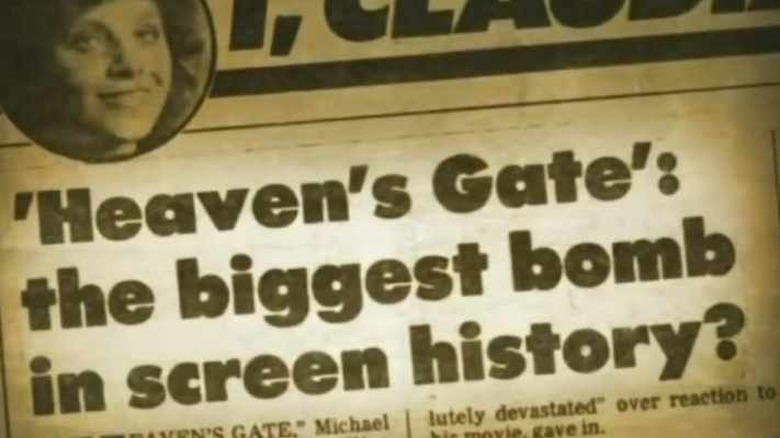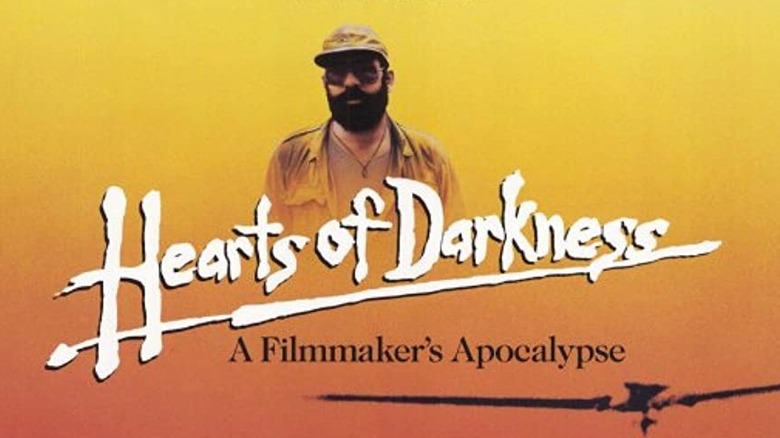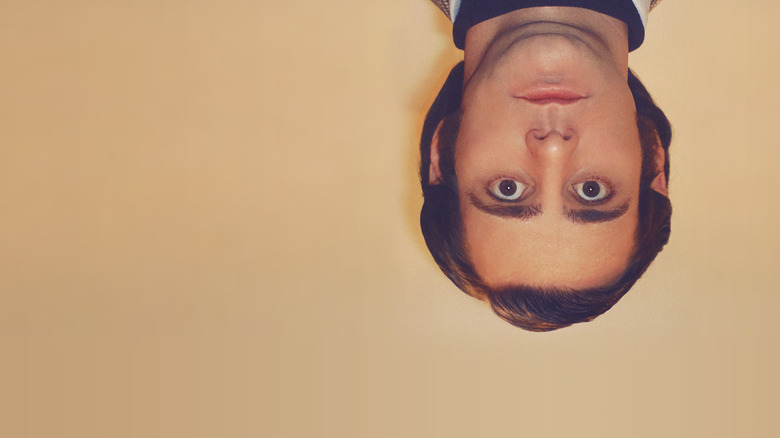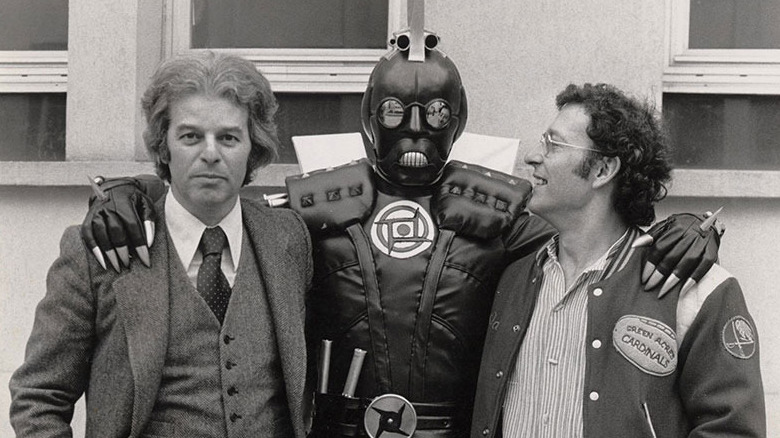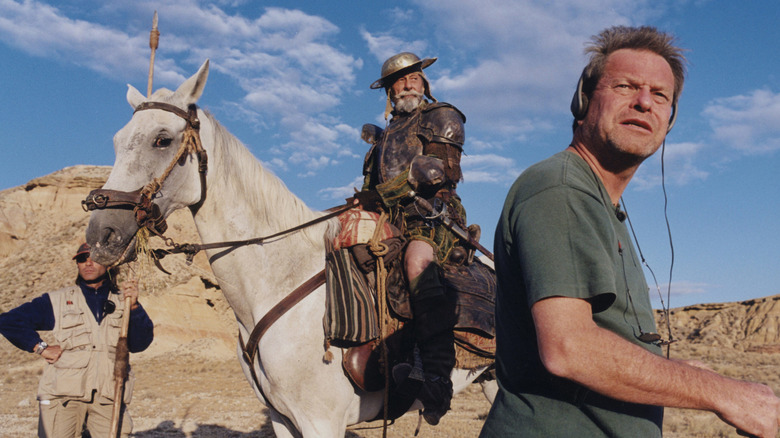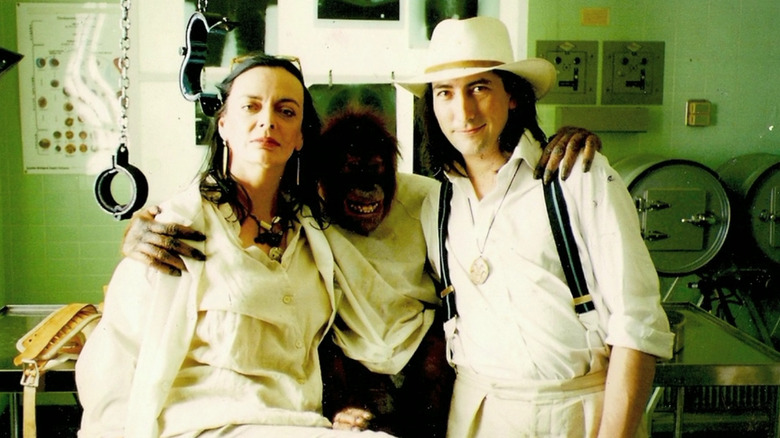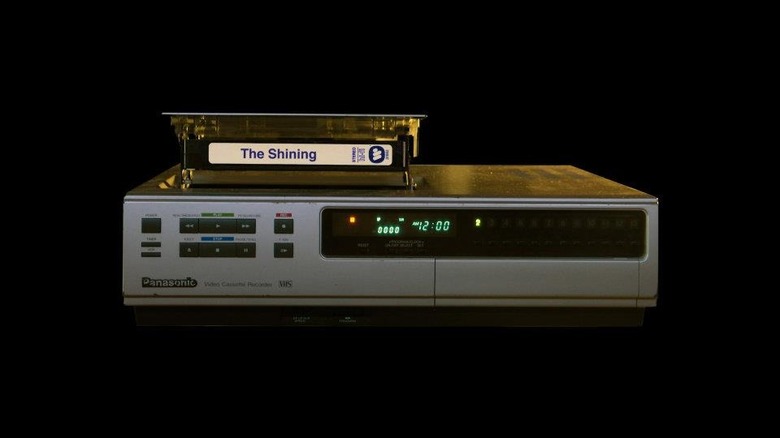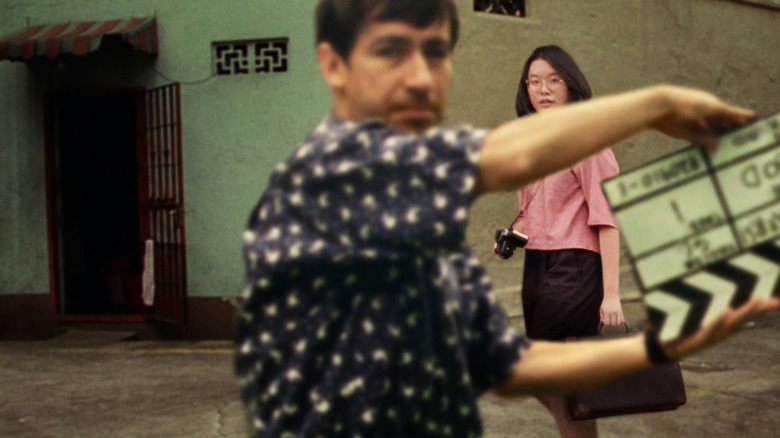The Best Documentaries About A Movie
We may receive a commission on purchases made from links.
Getting a film made can often turn into a Herculean feat, with catastrophic roadblocks, egos, hubris, acts of nature, and life and death standing in the way of the finish line. Sometimes the end results were worth the blood, sweat and tears, and with others, not so much, with box office flops ruining or ending careers. In some cases, there aren't even any results in the end — just unfinished films or ones that never even began, and are left as unrealized Hollywood dreams, making us imagine: What if?
Luckily, the truth and injustices of filmmaking are often put on display for all to see and hear in the form of revealing documentaries. Most of these documentaries are told well after the fact, and told very well, with insight and hindsight from those involved providing illuminating looks at the creative process in motion, as well as them going off the rails. There are so many to choose from, but let's document the best of the best documentaries about a movie.
American Movie (1999)
Although the cards always seemed to be stacked against him, nothing could keep Mark Borchardt from attempting to achieve his filmmaking dreams. When he couldn't get his feature "Northwestern" off the ground, he turned his divided attention to finishing off his horror short "Coven." Fellow midwesterner Chris Smith (see also "Jim & Andy" below) focused his lens on Borchardt and his right hand man Mike Schank in the 1999 Sundance Festival-winning documentary "American Movie," which he said "isn't about filmmaking so much as it is about Mark and his life and relationships."
While audiences have found much humor in the hapless trials and tribulations of Borchardt and company, Smith didn't see his documentary as condescending. He was interested in capturing the chase of the American Dream, containing elements of both "heartbreak and pure joy." Producer Sarah Price added that between the comedy and tragedy in Borchardt's life, there's a lesson we can all learn from him: "it's about getting up the next day and starting again, never giving up."
The Battle Over Citizen Kane (1996) / They'll Love Me When I'm Dead (2018)
Orson Welles never had it easy when it came to making movies. Sure, he was given carte blanche to come to Hollywood for 1941's "Citizen Kane" — but just had to go ahead and tick off one of the most powerful men in the US. RKO took "The Magnificent Ambersons" away from him for editing, "The Trial" was abruptly put in theaters as he edited it up until the last minute, and he spent decades raising funding for and (in some cases) filming piecemeal movies like "It's All True" (reportedly dumped in the ocean in the late '60s), "Don Quixote" (begun in the mid-'50s, he was still claiming he'd finish it in 1981) and "Moby Dick" (Welles shot about 75 minutes of material — it has completely gone missing).
in 2018, some thirty-plus years after his death, Welles devotees like Frank Marshall and Peter Bogdanovich successfully led the charge to finish "The Other Side of the Wind" — conceived in 1961, the film in essence took 57 years to finish. The struggle to produce the first and final Welles films are explored in depth in two excellent documentary companion pieces that only enhance the appreciation of their original source material, 1996's "The Battle Over Citizen Kane," and 2018's "They'll Love Me When I'm Dead."
Michael Epstein and Thomas Lennon's Academy Award nominated "The Battle Over Citizen Kane" examines how two "destructive geniuses" came to blows behind the scenes when Welles used publishing magnate William Randolph Heart as a partial inspiration for his title character, which "would scandalize the life of Hearst, plunge the film industry into crisis, and prove the undoing of the young Orson Welles." The war was ultimately worth it for cinéastes, as "Kane" is regarded as one of the best films of all time, but left our combatants forever battle scarred.
Welles was never able to top his masterful debut, and always had trouble trying to finance his next attempt at doing so. That included the long gestating, quasi-autobiographical comeback project "Wind" — and director Morgan Neville documents the unfinished business finally getting done in the freewheeling accompanying doc "They'll Love Me When I'm Dead." It takes its title from what Welles prophetically told friend, confidant, and "Wind" and "Dead" participant Bogdanovich.
Best Worst Movie (2009)
Having the dishonor of being one of the worst movies of all time is not usually something to celebrate, but not all worst movies are "Troll 2." A sequel in name only, 1990's "Troll 2" suffers from bad acting, low budget constraints, a corny script, misdirection from an Italian director who barely spoke English, and not even a single troll (instead, it had goblins). But a funny thing happened over time: it finally found an audience, one who couldn't stop laughing at it, and it grew to become a beloved cult movie.
Michael Paul Stephenson played "the kid in the worst movie ever made," and the embarrassment of it made him want to run away from it all. But like the audiences who came around to embrace "Troll 2," Stephenson did too, and decided to make peace with his past and explore the phenomenon in the documentary he wrote, produced, and directed, 2009's "Best Worst Movie." He reunited with his quirky castmates (long live Dr. George Hardy!) and director, reminisced on the past, and captured all the fun of midnight screenings. It all feels like an incredible family reunion, with deep bonds proving that even when your hopes and dreams are shattered, you still can live happily ever after.
Burden of Dreams (1982)
After Werner Herzog lost a bet by pushing Errol Morris to finally finish "Gates of Heaven," he followed up on his promise to "Eat His Shoe," which was documented in a 22 minute short by fellow filmmaker Les Blank. That pairing gave Blank "the confidence and courage to follow Herzog down to Peru where he was shooting 'Fitzcarraldo,'" his "Sisyphus-like story ... a challenge of the impossible," of a rubber baron's desire to bring an opera house to the jungle, and literally moving a mammoth boat over a mountain in order to do so.
Herzog's "impossible" labor to mount "Fitzcarraldo" became his own Sisyphus-like story, with endless delays caused by horrid weather, threats from warring natives, and principal actors departing after 40% of the film had been shot, due to dysentery and rock & roll commitments (adiós Jason Robards and Mick Jagger), and Blank was there to capture all the madness in 1982's "Burden of Dreams." He told Vice in 2009 that "it was like going to war. I was scared shitless." Robards' replacement was Klaus Kinski, who proved to be his own force of hellish nature, but nothing was a bigger challenge for all parties, in Herzog's words, than "nature itself, and it hits back ... and we have to accept that it is much stronger than we are."
The Death of Superman Lives: What Happened? (2015)
One of the most fascinating "what if" movies that got deep into pre-production was Tim Burton's fantastical take on Superman, with Nicholas Cage as the intended man of steel. Scripts based on the "Death of Superman" comic, with grandiose ideas by writers Kevin Smith, Wesley Stick, and Dan Gilroy, and producer Jon Peters, paired with beautiful production design and character sketches, and illuminated costumes by Colleen Atwood were set to make this the most unconventional superhero movie of the late 20th century. But it just wasn't meant to be.
Filmmaker Jon Schnepp was fascinated by this "science fiction, heavy metal take on Superman," and was hellbent on finding out why it never came to fruition. His amusing 2015 Kickstarter-funded documentary "The Death of "Superman Lives": What Happened?" interviews all the principal players (minus Cage), and not only posits about "what could have been, but of how what was not made had a ripple effect across every other iteration" of Superman that followed. Schnepp added that he wanted "to show how ideas can be powerful, how negativity destroys creativity, and that everything has the ability to become fantastic!" Kevin Smith speaks for us all, saying that if he was hypothetically asked, "Would you like to see a Nic Cage/Superman movie? I'd be like yes, take all my money cause I wanna see what that looks like." This doc is as close as we will ever get.
Final Cut: The Making and Unmaking of Heaven's Gate (2004)
"Heaven's Gate" is one of the most notorious films in the annals of Hollywood history, for its ballooned budget, perfectionist director's unchecked overindulgence (roller skating lessons, endless takes), unbelievably bad press ("like a forced, four-hour walking tour of one's own living room"), and even worse takes at the back office. The 1970s saw the rise of the director as auteur, with all the power in filmmaking, but Michael Cimino's derided follow-up to his Oscar winning "Deer Hunter" put an abrupt end to all that, and brought the production company founded by D. W. Griffith, Charlie Chaplin, Mary Pickford, and Douglas Fairbanks — United Artists — to its knees.
History had not been kind to "Heaven's Gate," and director Michael Epstein wanted to help change the narrative on the misunderstood masterpiece when he adapted UA studio executive Steven Bach's 1985 tell-all book about the disastrous production for the 2004 documentary, "Final Cut: The Making and Unmaking of Heaven's Gate." While Cimino declined to be interviewed for the doc, his presence is felt in every inch of the talking headed affair, narrated by Willem Dafoe and featuring recollections from collaborators Kris Kristofferson, Vilmos Zsigmond, Jeff Bridges, Brad Dourif, and out of their league UA execs Bach and David Field. Kristofferson mused that the failure of "Heaven's Gate" led to the "uncreative people" winning in the end, and "that's what happened to the business."
Hearts of Darkness: A Filmmaker's Apocalypse (1991)
Twelve years after Francis Ford Coppola's Vietnam War epic "Apocalypse Now" exploded into theaters in 1979, the uphill battle (including Martin Sheen's heart attack, Marlon Brando's unpreparedness and demands, issues with the Philippine Air Force due to a civil war) of how the classic got made was fully told in the documentary "Hearts of Darkness: A Filmmaker's Apocalypse." Taking its own name from the Joseph Conrad novel on which Coppola's film was based, "Hearts" incorporated behind the scenes footage shot by his wife Eleanor and new interviews conducted with the cast and crew, all pieced together by Fax Bahr and George Hickenlooper.
Coppola sums up the inflamed affair as such: "We were in the jungle. There were too many of us. We had access to too much money, too much equipment, and little by little, we went insane." The insanity moved Gene Siskel to name it the best movie of 1991, and wrote that "the oddest thing occurs: There is so much drama that we actually fear that the movie might not get finished." Don't worry Gene, it did and we're thankful to have both to watch.
Jim & Andy: The Great Beyond (2017)
1999's "Man on The Moon" was another step forward for Jim Carrey's career, in showing that he wasn't just a funny face, but a performer with serious acting chops. While the film was not exactly a critical or a box office success like his previous movies, there was no denying the brilliant Golden Globe winning work Carrey handed in, embodying the multi-layered talents of comedian/provocateur Andy Kaufman in Miloš Forman's film.
Director Chris Smith (see "American Movie" above) was brought in by producer Spike Jonze to wade through 100 hours worth of behind the scenes footage of Carrey never breaking character as Kaufman (and his alter ego Tony Clifton), wrestling literally and figuratively with the weight of making the biopic. The absorbing result, 2017's "Jim & Andy: The Great Beyond – Featuring a Very Special, Contractually Obligated Mention of Tony Clifton," had Smith battling on multiple fronts.
"There are four main elements being juggled," Smith said. "One is the event of the making of the film. Andy's biography, Jim's biography and the aftermath and how the experience shaped and affected Jim's life going forward. So, it was really challenging trying to figure out where to pit all those things together and make them fit in one tone rather effortlessly. As we spent more time with the footage, it revealed itself over time."
Carrey glumly admitted after the fact that when his "vacation" from his real life ended, by exiting playing Kaufman, "I didn't know who I was anymore." When watching "Jim & Andy," it's hard for the viewer to tell who he was then, but we have a clearer picture of who he is now.
Jodorowsky's Dune (2013)
One of the greatest films never made has got to be Alejandro Jodorowsky's stab at Frank Herbert's "Dune." Hot off the heels of his early '70s cult favorites "El Topo" and "The Holy Mountain," Jodorowsky got to handpick his next project, and he turned to a book series of which he had never read a single page. He storyboard each frame of the would-be movie and enlisted a cadre of incredible talents: Salvador Dalí, Orson Welles, Mick Jagger, artists HR Giger, Chris Foss and Mœbius, effects man Dan O'Bannon and music by Pink Floyd, all to realize his spectacular vision. Like with "Superman Lives," for numerous reasons (a possible 10+ hour running time didn't help), it never advanced beyond its pre-production stage, leaving us with another great what if.
When piecing together his 2013 documentary "Jodorowsky's Dune," director Frank Pavich made it "so you don't have to know who Jodorowsky is. You don't have to be a fan of his films. You don't have to know what 'Dune' is or science fiction." Jodorowsky steals the show in the doc, and his passionate personality is so infectious, that even the director admitted that "you can't help but fall in love with him. If you don't fall in love, you don't have a soul, because he's just so amazing." His "Dune" would have been too. Guess we'll have to settle on David Lynch or Denis Villeneuve's visions, unless the folks at Spice DAO can figure out what to do with Jodorowsky's "Dune" script bible they recently bought for $3 million.
Lost in La Mancha (2002)
There is a special kind of development hell dedicated to the works of director Terry Gilliam, and another seemingly reserved for "Don Quixote" (see Orson Welles above), and it al came together when the "Brazil" mastermind attempted to film "The Man Who Killed Don Quixote." When Gilliam began production with Johnny Depp and Jean Rochefort in 2000, he re-enlisted Keith Fulton and Louis Pepe (makers of the solid behind-the-scenes "The Hamster Factor and Other Tales of Twelve Monkeys") to capture the movie magic and eventually release a "making of." Two years later, Fulton and Pepe would beat Gilliam to theaters, with a not-so-much-making of documentary called "Lost in La Mancha," visually displaying the Murphy's law of Gilliam's quixotic attempt.
Narrated by Gilliam alum Jeff Bridges, we are mistreated to a series of unfortunate events, from fighter planes making too much noise while filming, flooded sets, and herniated discs taking Rochefort out of commission, ultimately shelving the project. The 2002 documentary paints a sad picture of endless bad luck, but the good news is that Gilliam eventually realized his dream, completing the film decades later. Naturally, he brought Fulton and Pepe back to document it all, and in 2019 released their follow-up, "He Dreams of Giants."
Lost Soul: The Doomed Journey of Richard Stanley's Island of Dr. Moreau (2014)
Richard Stanley was ready to make the leap from savvy independent filmmaker to visionary director, with a studio and big budget finally backing his ambitions. He poured his heart and soul into making H.G. Wells' "The Island of Dr. Moreau," a modern take on the horror masterpiece of a man playing god with human-like animal creatures. Stanley assembled a dream team with make-up by Stan Winston Studio and Marlon Brando as the title character (he and Stanley bonded over the fact that one of his most famous roles, Kurtz from "Apocalypse," was based on his great grandfather, Henry Morton Stanley).
And yet whatever could go wrong did go wrong, and is explored in brutal detail 18 years later in David Gregory's 2014 documentary "Lost Soul: The Doomed Journey of Richard Stanley's Island of Dr. Moreau." A hurricane destroyed sets, Brando's daughter's death delayed his arrival, and when he did arrive, he and Val Kilmer's demands and egos halted any momentum (be sure and check out the 2021 documentary "Val" if you want Kilmer's side of the story). Ultimately it cost Stanley his job, as he was banned from the set (although he later snuck back on, incognito in creature costume) and was replaced by veteran director John Frankenheimer, who didn't fare much better. Stanley, the producers, studio heads, actors and many others who participated in the ultimate debacle shine a light on the darkness, debauchery, and even the weird whims of Brando in his twilight (he wanted Moreau to be revealed as a dolphin in the end).
Room 237 (2012)
There is a lot to unpack in Stanley Kubrick's 1980 screen adaptation of Stephen King's "The Shining," and for some fans of the film, almost too much. Rodney Asher's hypnotic 2012 "subjective" documentary gives a voice to 5 individuals with deeper readings of the film, both above and below the surface. Asher told Slashfilm that "this is in some bigger way an exploration of the idea of interpretation and the study of symbols in general."
We never see any of these 5 theorists onscreen in "Room 237," but their takes on hidden meanings within "The Shinning," no matter how far fetched they sound — Native American genocide, the Holocaust, faking the Apollo Moon landing — seem to be credible when paired with the engrossing visuals Asher juxtaposes with them. The theories presented had Kubrick's longtime assistant Leon Vitali crying "total balderdash," but the doc is more than just fan fiction, it's a look at the experience of moviegoing, re-watching movies over and over, and becoming obsessed with them. "Room 237" ends up being its own hedge maze of overlooked fun, one that is worth re-watching and being obsessed over on its own.
Shirkers (2018)
Like life, movies are filled with twists and turns, mystery, uncertainty, crushed dreams and even second chances. For Sandi Tan, her life has been shaped by an unfinished 1992 road movie she attempted to make as a teenager in Singapore, haunting her as "unfinished business." The movie to be was "Shirkers," and it was made with friends, family and an enigmatic, yet cryptic mentor named Georges Cardona — who, when filming wrapped, disappeared with all the footage in hand. Decades passed, and the footage resurfaced, setting off an enigma that was worth unraveling, and examined in Tan's 2018 documentary "Shirkers."
For Tan, "reopening a wound" was not something she immediately wanted to do, but believes the documentary served the story better than had they "just pieced together the original and put it out" as a completed feature. She added in her Interview interview, that the documentary was universally appealing as others have also encountered "a crisis of confidence or have had something taken away from them. Everyone is trying to find the courage to open up that wound and pursue it and finish it." The cathartic work let Tan, and audience, "rediscover" her "superhero" 18-year old self, and "remember what it felt like to be young and brave and just boundlessly optimistic."
